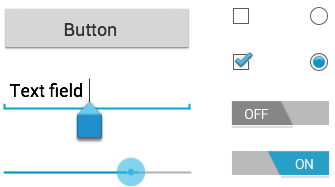layout: true <footer> <span class="icon github"> <svg version="1.1" class="github-icon-svg" xmlns="http://www.w3.org/2000/svg" xmlns:xlink="http://www.w3.org/1999/xlink" x="0px" y="0px" viewBox="0 0 16 16" enable-background="new 0 0 16 16" xml:space="preserve"> <path fill-rule="evenodd" clip-rule="evenodd" fill="#C2C2C2" d="M7.999,0.431c-4.285,0-7.76,3.474-7.76,7.761c0,3.428,2.223,6.337,5.307,7.363c0.388,0.071,0.53-0.168,0.53-0.374c0-0.184-0.007-0.672-0.01-1.32c-2.159,0.469-2.614-1.04-2.614-1.04c-0.353-0.896-0.862-1.135-0.862-1.135c-0.705-0.481,0.053-0.472,0.053-0.472c0.779,0.055,1.189,0.8,1.189,0.8c0.692,1.186,1.816,0.843,2.258,0.645c0.071-0.502,0.271-0.843,0.493-1.037C4.86,11.425,3.049,10.76,3.049,7.786c0-0.847,0.302-1.54,0.799-2.082C3.768,5.507,3.501,4.718,3.924,3.65c0,0,0.652-0.209,2.134,0.796C6.677,4.273,7.34,4.187,8,4.184c0.659,0.003,1.323,0.089,1.943,0.261c1.482-1.004,2.132-0.796,2.132-0.796c0.423,1.068,0.157,1.857,0.077,2.054c0.497,0.542,0.798,1.235,0.798,2.082c0,2.981-1.814,3.637-3.543,3.829c0.279,0.24,0.527,0.713,0.527,1.437c0,1.037-0.01,1.874-0.01,2.129c0,0.208,0.14,0.449,0.534,0.373c3.081-1.028,5.302-3.935,5.302-7.362C15.76,3.906,12.285,0.431,7.999,0.431z"/> </svg> </span> <a href="https://github.com/sikoried"><span class="username">sikoried</span></a> </footer> --- # Design Pattern, pt. 1 ## Iterator, Composite and Observer Korbinian Riedhammer --- # Recommended Reading <img src="/assets/design-pattern-amazon.jpg" alt="GOF" style="float: left; width: 30%; margin-right: 30px"> ## [Design Patterns](https://www.amazon.de/Patterns-Elements-Reusable-Object-Oriented-Software/dp/0201633612/) by Gamma/Helm/Johnson/Vlissides (_Gang of Four_). --- .skip[] > All well-structured object-oriented architectures are full of patterns. > Indeed, one of the ways I measure the .h[quality of an object-oriented system] is to judge whether or not its developers have paid careful attention to the .h[common collaborations among its objects]. > Focusing on such mechanisms during a system's development can yield an .h[architecture that is smaller, simpler and far more understandable] than if these patterns are ignored. .skip.right[ Grady Booch, Foreword to Design Patterns, 1994(!) ] --- # Design Patterns Patterns that emerged for solving frequent problems Shared vocabulary for developers - common ground for talking about architecture - less talking, more doing Patterns are based on principles of object-oriented programming. - interfaces, inheritance - composition, delegation and encapsulation Toolset for a clear software architecture. --- # Class Diagrams .skip[  ] **Composition**: real-world whole-part relation **Aggregation**: "catalog" containment, can exist independently --- # Sequence Diagrams .skip.center[  ] --- # Iterator ```java SimpleList<Integer> list = SimpleList<>(3, 1, 3, 3, 7); ``` .container[ .column[ ```java int i = 0; for ( ; i < list.size(); ) { System.out.println(list.get(i)); i++; } ``` ] .column[ ```java int i = 0; while (i < list.size()) { System.out.println(list.get(i)); i++; } ``` ] ] .container[ ```java Iterator<Integer> it = list.???; while (it.hasNext()) { Integer v = it.next(); } ``` ] How does an iterator look like? --- # Iterator <img alt="iterator-uml" class="float-left w40" src="/assets/dp-iterator.svg"> ```java class SimpleList<T> implements BasicList<T> { // ... public Iterator<T> iterator() { return new Iterator<T>() { Element it = root; @Override public boolean hasNext() { return it == null; } @Override public T next() { T value = it.value; it = it.next; return value; } }; } } ``` --- # Composite .skip.center[  ] --- # Composite .skip.center[  ] --- # Composite Examples - file systems: identifier, directory, file, link - JUnit: + component: _test_ + composite: _test suite_ comprised of multiple tests + leaf: individual test case - HTML documents: + component: _element_ + composite: containers (`div`, `p`, etc.) + leaf: _text nodes_ - GUI libraries (such as Android) + component: `android.view.View` + composite: `android.view.ViewGroup` + leaf: individual widgets, e.g. `Button` --- # Observer .skip.center[  ] --- # Observer .skip.center[  ] --- # Model-View-Controller .container[ .column[  ] .column.w60[ **Model**: - current data and state of the app - Java program **View**: - visualization of data and state - JavaFX widget library **Controller**: - business logic (by you) - user input (provided by OS) ] ] .container[ _Sometimes you will see Model-View-Viewcontroller (MVVC) or Model-View-Viewmodel (MVVM), adding an intermediate layer._ ] --- # Model Data structures, entity types, auxiliary types. Core algorithms to load, store, organize and transform data.* Typically implemented in (pure) Java.** Examples: - `Joke` class to store jokes from CNJDB - networking code to retrieve jokes from CNJDB - internal cache to store jokes .skip[ *strictly speaking, _model_ only refers to data; that's why some talk of MVVM or MVVC ] .skip[ **you can also use meta languages or reference native libraries ] --- # View What you _see_ on when you open the app. Text views, buttons, lists, images, etc. Typically implemented using a certain XML format, which is then "inflated" by a loader program. ```xml <?xml version="1.0" encoding="UTF-8"?> <?import javafx.geometry.Insets?> <?import javafx.scene.control.Button?> <?import javafx.scene.control.ListView?> <?import javafx.scene.layout.GridPane?> <GridPane xmlns="http://javafx.com/javafx/8.0.172-ea" xmlns:fx="http://javafx.com/fxml/1" fx:controller="ohm.softa.a07.controllers.MainController"> <Button fx:id="btnRefresh" text="Refresh" GridPane.columnIndex="0" GridPane.rowIndex="0"> <ListView fx:id="mealsList" GridPane.columnIndex="0" GridPane.columnSpan="3" GridPane.hgrow="ALWAYS" GridPane.rowIndex="1" GridPane.vgrow="ALWAYS" /> </GridPane> ``` --- # Controller Manipulate the model using user or system input. User input: button clicks, key presses, etc. System signals: interrupts, networking, ... Typically implemented in Java, by triggering certain logic on a certain event. --- # JavaFX: Basic Building Blocks (1) - see the [base project](https://github.com/ohm-softa/07-composite-observer-jfx) for this weeks assignment - an `Application` typically consists of a main (`Parent`) view, rendered to a `Stage` - A view typically has a dedicated controller + wiring of XML-defined widgets to controller via `@FXML` annotations - `public static void main(String... args)` typically only calls `Application.launch` ```java public class App extends Application { public static void main(String[] args) { launch(args); } @Override public void start(Stage stage) throws Exception { Parent root = FXMLLoader.load(getClass().getResource("main.fxml")); stage.setTitle("Cafeteria"); stage.setScene(new Scene(root, 800, 600)); stage.show(); } } ``` --- # A Note on Building See [Getting Started Documentation](https://openjfx.io/openjfx-docs/) for your favorite IDE. Recommended: Gradle ``` plugins{ id 'org.openjfx.javafxplugin' version '0.0.9' } javafx { sdk = '/Users/riedhammerko/Library/Java/JavaVirtualMachines/javafx-sdk-17' version = 17 modules = [ 'javafx.controls', 'javafx.fxml' ] } ``` --- # Basic Components [`javafx.scene.control`](https://openjfx.io/javadoc/17/javafx.controls/javafx/scene/control/package-summary.html)  - `TextField` (single and multiline) - `Button` - `CheckBox` and `RadioButton` - `ListView` --- # A Word on Logging `System.out` etc. don't work (no terminal, no service!) Use system logging services (rendered to logcat): ```java import org.apache.logging.log4j.LogManager; import org.apache.logging.log4j.Logger; private static final Logger logger = LogManager.getLogger(MainController.class); log.setLevel(Level.WARN); log.trace("Trace Message!"); log.debug("Debug Message!"); log.info("Info Message!"); log.warn("Warn Message!"); log.error("Error Message!"); log.fatal("Fatal Message!"); ``` --- # Log4j integrates! ...for example with `OkHttp` ```java HttpLoggingInterceptor interceptor = new HttpLoggingInterceptor(); interceptor.setLevel(HttpLoggingInterceptor.Level.BODY); OkHttpClient client = new OkHttpClient.Builder() .addInterceptor(interceptor) .build(); Retrofit retrofit = new Retrofit.Builder() .client(client) .baseUrl("https://openmensa.org/api/v2/") .build(); ```